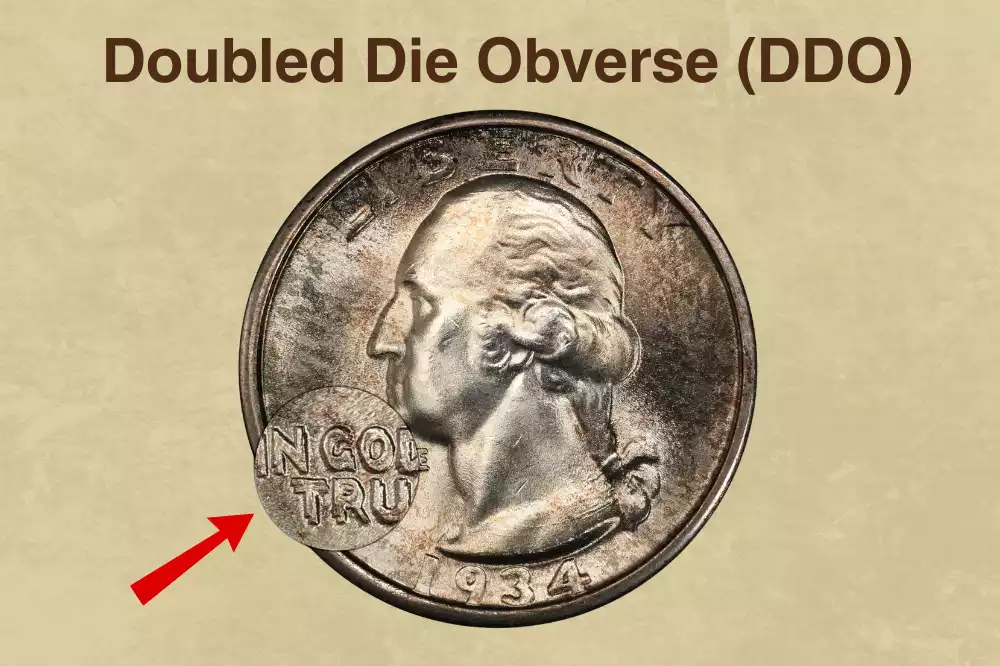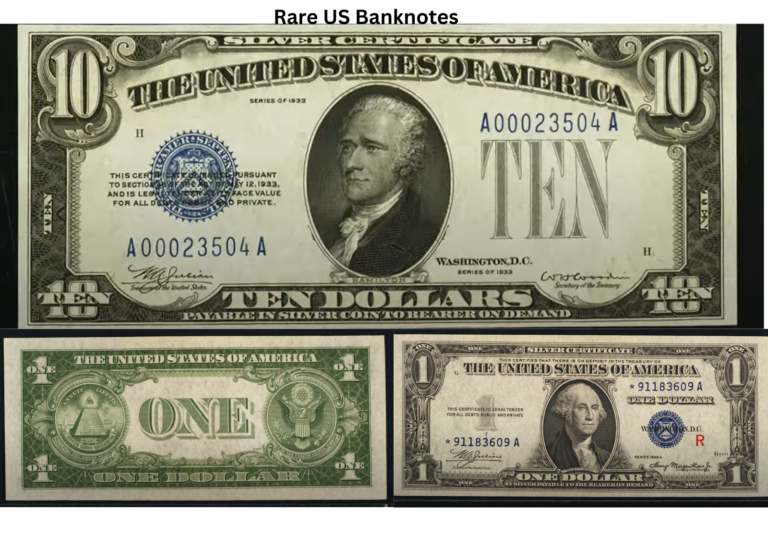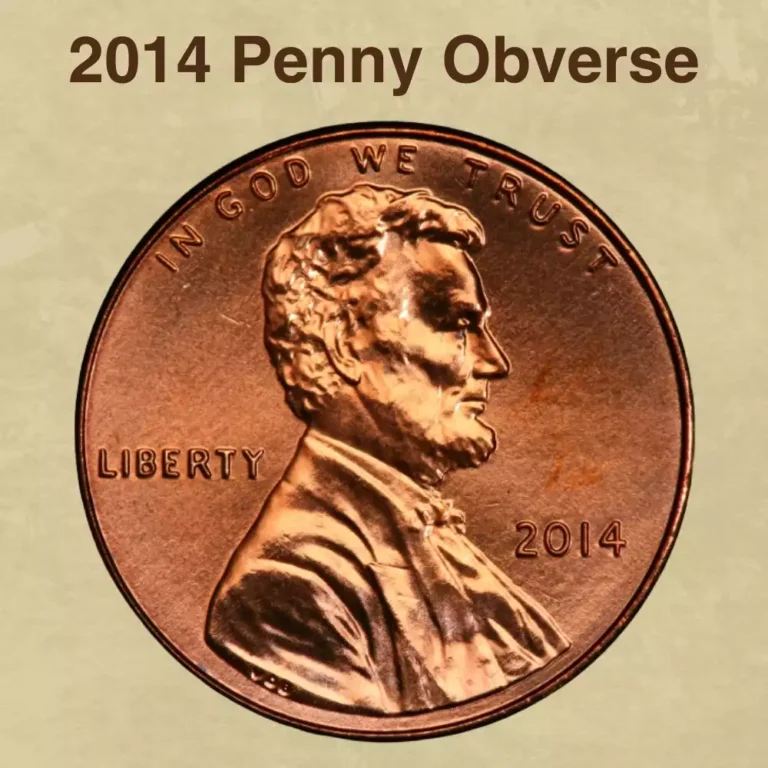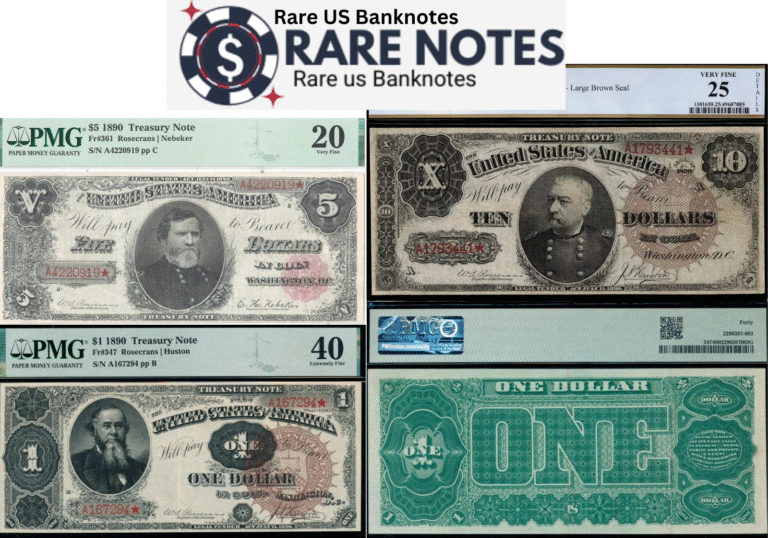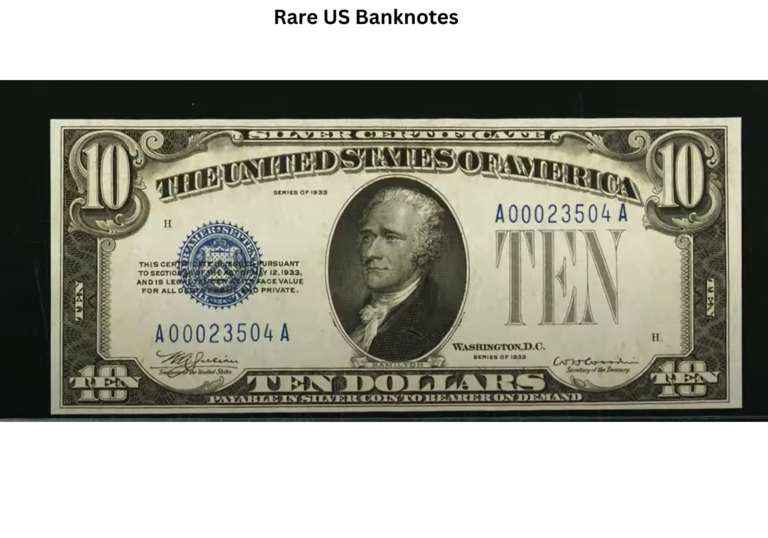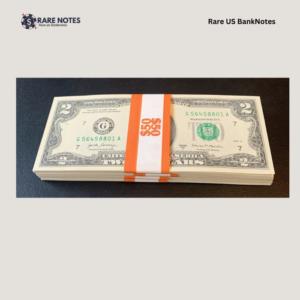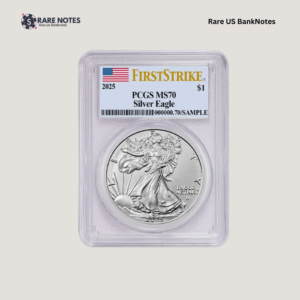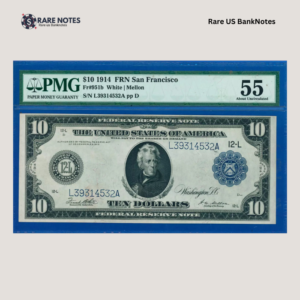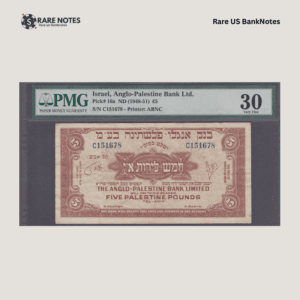In June 2016, coin dealer Mike Byers listed a 1970-S proof Washington quarter on eBay for $35,000, triggering a nationwide coin hunt. This wasn’t ordinary pocket change—it was a proof quarter struck over a 1941 Canadian quarter.
“I have a jug full of quarters and dimes,” commented Bill Atwell on the Philadelphia ABC-6 news Facebook page. “I know what I’m doing after work.” This viral story sent millions rushing to examine their pocket change.
The Canadian overstrike represents one of the most valuable Washington quarter errors, but it’s far from alone. The truth is, valuable Washington quarter errors have been hiding in plain sight since 1932. From the moment the first quarters rolled off the presses, minting mistakes have transformed ordinary 25-cent pieces into numismatic treasures worth hundreds, thousands, or even tens of thousands of dollars.
This comprehensive guide reveals 20 distinct Washington quarter errors that collectors desperately seek. Whether it’s a dramatic wrong planchet strike, a subtle doubled die, or a missing clad layer, each error tells a unique story of what went wrong at the U.S. Mint.
Washington Quarter Doubled Die Errors
1. Doubled Die Obverse (DDO) Errors
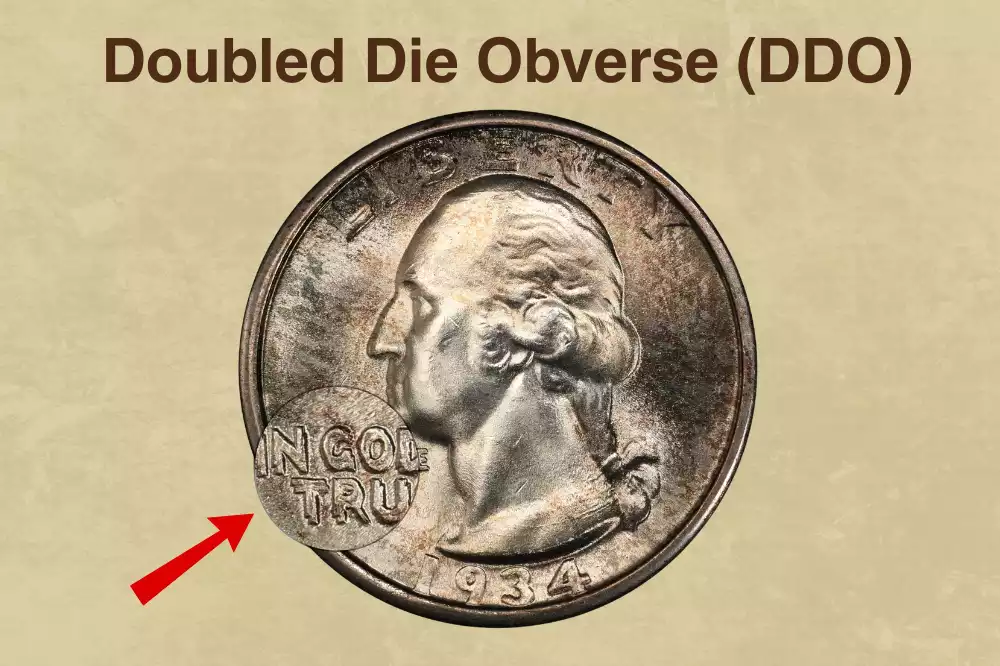
DDO errors occur when a coin die receives multiple misaligned impressions during its creation. Before 1997, the U.S. Mint required multiple hub strikes to transfer designs onto working dies. If the hub shifted between strikes, it created a doubled image that would appear on every coin struck from that die. This doubling is most visible on lettering like “LIBERTY” and “IN GOD WE TRUST.”
The most valuable Washington quarter DDO is the 1943 Doubled Die Obverse Washington Quarter is by far the scarcest major doubled die for the entire Washington quarter dollar series. Notable auction records include:
- 1943 DDO: $22,250 • MS67 • 03-22-2020
- 1943-S DDO: $18,800 • MS67 • 02-25-2021
- 1934 DDO: $10,350 • MS65 • 03-08-2005
The 1965 Doubled Die Obverse Quarter Dollar (FS-101) is a very rare and popular variety that shows clear doubling on most of the letters of IN GOD WE TRUST, LIBERTY, the date and on the left side of Washington’s profile.
Known DDO Error Years for Washington Quarters (1932-1998):
2. Doubled Die Reverse (DDR) Errors
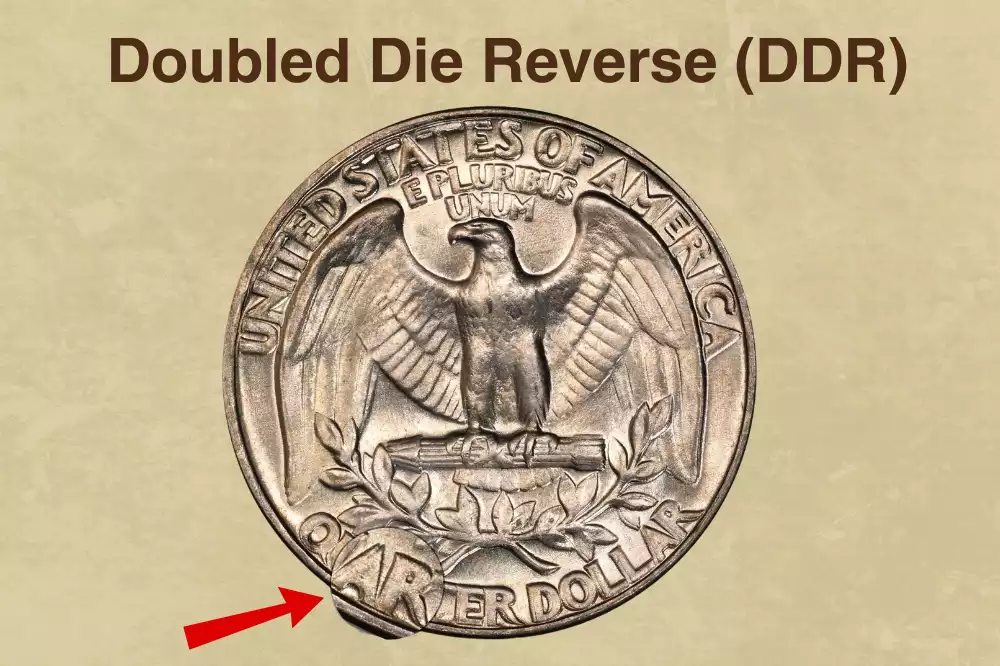
DDR (Doubled Die Reverse) occurs through the same hubbing process as DDO, but affects the reverse (tails) side of the coin. Like DDO errors, DDR happens when the hub and die are misaligned during multiple impressions, creating doubled images on design elements such as the eagle, lettering, or motto on Washington quarters.
The most valuable DDR in Washington quarter history is the 1967 SMS 25c. Doubled Die Reverse FS-801 is extremely rare with only 4 examples accounted for in all grades at PCGS. This coin set a record when it sold for $11,753.50. Certainly a record for the variety, and likely a record price paid for any clad issue proof quarter.
Other significant DDR auction results include:
- $5,750 • MS66 • 05-04-2005 • Heritage Auctions for a 1942-D DDR
- $3,404.50 for a 1963 Proof Doubled Die Reverse FS-802
- $1,540 for a 1970-D Doubled Die Reverse FS-802 in PCGS MS-66
Known DDO Error Years for Washington Quarters (1932-1998):
Washington Quarter Mint Mark Errors
3. Repunched Mint Mark (RPM) Errors

Prior to 1990, Mint marks were hand punched into working dies, sometimes more than once, using a hand-held punch and a mallet. If the punch moved between taps of the mallet, a doubled, tripled, or even quadrupled Mint mark resulted. This manual process required multiple strikes to create a clear impression, often resulting in misaligned mint marks.
RPM errors occur only on the mint mark itself—the letter appears doubled, shadowed, or positioned incorrectly. The 1960-D, for example, has over 100 different re-punched mint mark varieties, demonstrating how common these errors were during the hand-punching era.
Notable Washington quarter RPM values:
- 1943-S/S RPM FS-503: $1,650 in PCGS MS-65
- 1952-D Large D FS-501: $1,485 in PCGS MS-65
Beginning in 1990 for cents and 5-cent coins and 1991 for other denominations, the Mint mark was applied to the master die, ending 150+ years of hand-punched mint marks. While most RPMs carry modest premiums, dramatic examples with widely separated or multiple punchings remain highly collectible.
Known RPM Error Years for Washington Quarters (1932-1998):
4. Over Mint Mark (OMM) Errors

Overmintmarks occur when two distinct mintmarks overlap one another. Unlike RPMs where the same mint mark is punched multiple times, OMM errors feature one mint’s letter punched over a different mint’s letter—such as D/S (Denver over San Francisco) or S/D.
This typically occurred when excess blanks from one mint were taken to another branch for recycling since the mint mark was often the last detail added to a coin, or when dies intended for one mint were repurposed for another.
For example, when the Denver Mint ran out of working dies, they may have reassigned some dies originally slated for the San Francisco Mint as a temporary fix.
Washington quarter OMM varieties include:
- 1950-D/S OMM FS-601
- 1953-D/S OMM FS-601
While specific auction records for Washington quarter OMMs are scarce in available data, these varieties typically command premiums of $50-$150 over regular issues, depending on clarity and grade. The historical significance of dies traveling between mints makes OMM errors particularly interesting to collectors.
Known OMM Error Years for Washington Quarters (1932-1998):
5. Misplaced Mint Mark Errors

A misplaced mint mark occurs when the mint mark punch was positioned incorrectly on the die, placing the letter too high, low, or to the side of its intended location.
Unlike RPMs or OMMs, a misplaced mint mark shows only one clear impression—just in the wrong spot. The error happened because hand-punching allowed for human error in positioning. Because of the mint marks being punched in by hand, the mint mark locations varied.
A notable Washington quarter example is 1957-D Misplaced Mint Mark FS-501. According to Bowers, the 1975-D misplaced mint mark is probably 400 times rarer than the regular one, showing how extreme displacement creates rarity.
Most misplaced mint marks carry modest premiums of $10-$50, but dramatic examples where the mint mark appears far from its normal position can command $100+ depending on the degree of displacement.
Known Misplaced Mint Mark Error Year for Washington Quarters (1932-1998): 1957 Quarter
Washington Quarter Strike Errors
6. Off-Center Strike Errors

An off-center strike occurs when a planchet (coin blank) is improperly positioned in the press during striking, the coin having part of the coin’s design struck off center of the planchet instead of being perfectly centered between the dies.
The cause is mechanical—feeding fingers that position planchets sometimes malfunction, placing the blank incorrectly in the collar. When the dies come down to strike, they hit an improperly positioned planchet, creating the characteristic off-center appearance with a blank crescent on one side.
Value depends heavily on two factors: the percentage off-center and whether the date remains visible. The value of an off-center strike error depends on the percentage of off-centeredness. The greater the percentage, the more valuable the coin would generally be. Without a visible date, values plummet.
Examples of off-center Washington quarters show a range of values:
- 75% Off-Center Washington Quarter in Brilliant Uncirculated condition sold for $39.95
- 90% Off-Center Washington Quarter in Gem Brilliant Uncirculated sold for $34.95
- 1994-P Washington Quarter Off-Center in Premium Quality Brilliant Uncirculated sold for $49.95
While these recorded prices seem modest compared to other major errors, extreme off-center strikes (especially from the silver era 1932-1964) with visible dates in high grades can command significantly higher premiums.
Known Off-Center Strike Error Years for Washington Quarters (1932-1998):
7. Broad Strike Errors

A broad strike occurs when the collar die—the retaining ring that normally constrains the coin during striking—fails to deploy properly. Without this restraint, metal flows freely outward when struck, creating a coin that’s wider and thinner than normal with a characteristic “pancake” appearance.
The key to identifying a broad strike is that the full design must be present on both faces, though the coin will have an incomplete edge with a missing or misshapen rim. This is a crucial distinction: if any part of the design is cut off, it’s classified as an “off-center strike” rather than a broad strike. This difference significantly affects both identification and value.
Washington quarter broad strikes are consistently popular among error collectors due to their dramatic appearance. While some examples sell modestly (such as a 1983-P for $19.95), values vary widely based on the coin’s era, condition, and degree of expansion. Silver-era broad strikes (1932-1964) and those with extreme spreading typically command higher premiums.
These coins are easily recognizable by their distinctive characteristics: they’re noticeably thinner and wider than normal strikes, with metal that has spread beyond the intended diameter, creating an unmistakable visual impact that appeals to error collectors.
Known Broad Strike Error Years for Washington Quarters (1932-1998):
8. Strike Through Grease Errors
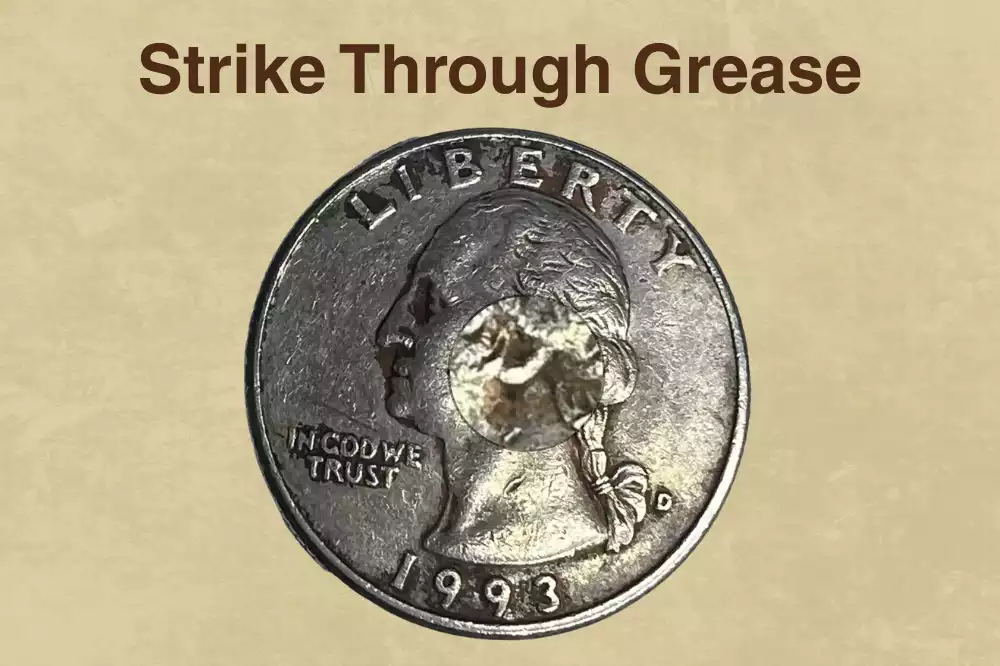
Strike through grease errors occur when lubricating grease from coin press machinery escapes onto the die surface, plugging cavities where metal would normally flow during striking. Also known as “filled die” errors, they produce weak strikes with missing or mushy design elements.
Strike through grease is the most common struck-through error type, with minor examples being extremely common and carrying no premium. The grease, often mixed with oil and metal shavings, fills die recesses causing incomplete design transfer.
On Washington quarters, these errors typically affect letters in “IN GOD WE TRUST,” “LIBERTY,” or “E PLURIBUS UNUM.” The missing elements appear weak, incomplete, or entirely absent depending on the amount of grease present during striking.
For value, basic strike through grease errors on Washington quarters without retained material typically command modest premiums of $5-$20 for obvious examples. However, dramatic strikes through foreign objects can be worth significantly more – a Washington quarter with a large piece of plastic struck through (but not retained) might fetch $100, while the same error with the plastic retained could command $1,000 or more.
Known Strike Through Grease Error Years for Washington Quarters (1932-1998):
9. Flip-Over Double Strike Errors

A flip-over double strike is one of the most dramatic and scarce double strike errors. This error occurs when a coin is struck once, then flips over between strikes and receives a second impression with the obverse die striking the reverse and vice versa. The result is a coin showing design elements from both sides mixed together on each face.
The mechanism requires the struck coin to somehow flip 180 degrees while remaining in or returning to the striking chamber – an extremely unlikely event that makes these errors exceptionally rare. Some theories suggest the coin might bounce back into the feeder system and return upside down, or flip within the collar during a malfunction.
According to CONECA (Combined Organizations of Numismatic Error Collectors of America), this error type is officially termed “Obverse struck over reverse”.
A 1989-P Washington Quarter with rare flip-over in-collar double strike was noted on eBay as a mint error coin. A 1974 quarter with double struck in collar combined with flip over error sold for $375 at auction.
Known Flip-Over Double Strike Error Years for Washington Quarters (1932-1998):
10. Partial Collar Errors

A partial collar error occurs when the collar die is out of position during striking. Part of the planchet is constrained by the collar while the remainder expands freely, creating a stepped edge with partial reeding. This malfunction produces a distinctive “railroad rim” appearance where the line resembles a rail and the partial reeds look like railroad ties.
The error happens when a blank entering the collar is not properly seated, resulting in only partial reeding as it’s struck. According to some professional institutions, this striking press malfunction causes the blank to sit slightly askew on the collar die.
The Auction records show A 1998-D Partial Collar/Obverse Brockage Washington quarter sold for $99 (Choice AU+).
Most partial collar errors on Washington quarters trade in the $39-$99 range, depending on condition and error severity.
Known Partial Collar Error Years for Washington Quarters (1932-1998):
Washington Quarter Planchet Errors
11. Wrong Planchet Errors
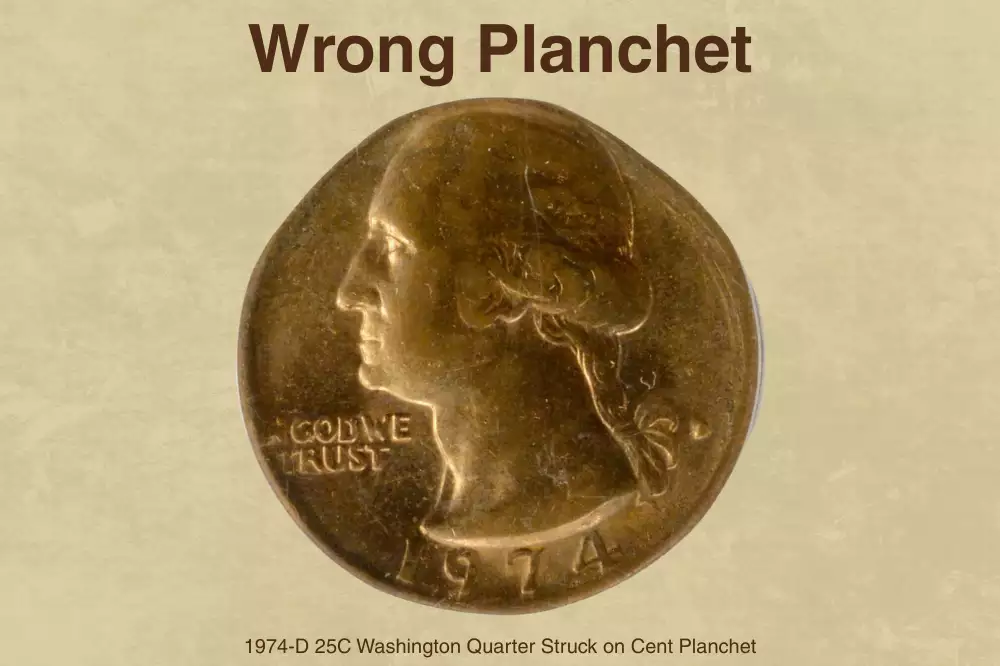
Wrong planchet errors occur when a quarter is struck on a blank intended for another denomination. This happens when planchets get mixed during production, often due to stray blanks caught in transportation hoppers between mint stations. When these hoppers are reused for different denominations, the trapped planchets can dislodge and get struck with the wrong dies.
Common types include quarters struck on dime planchets (weighing 2.27 grams instead of 5.67 grams) and cent planchets. These errors create coins with missing portions of the design, as the smaller planchet cannot accommodate the full quarter die impression.
Notable auction records include:
- 1965 Washington Quarter struck on 90% silver planchet: $7,050 in AU-53 (Stack’s Bowers, 2019)
- 1965 Washington Quarter on silver planchet: $5,462.50 in EF-45 (Heritage, 2010)
- 1971-D Quarter struck on dime planchet: Sold for $495 (Yesterday’s Change)
The transitional period of 1964-1965, when the mint switched from silver to clad composition, produced particularly valuable wrong planchet errors. These “transitional alloy” errors are extremely rare and highly coveted by collectors.
Known Wrong Planchet Error Years for Washington Quarters (1932-1998):
12. Clipped Planchet Errors
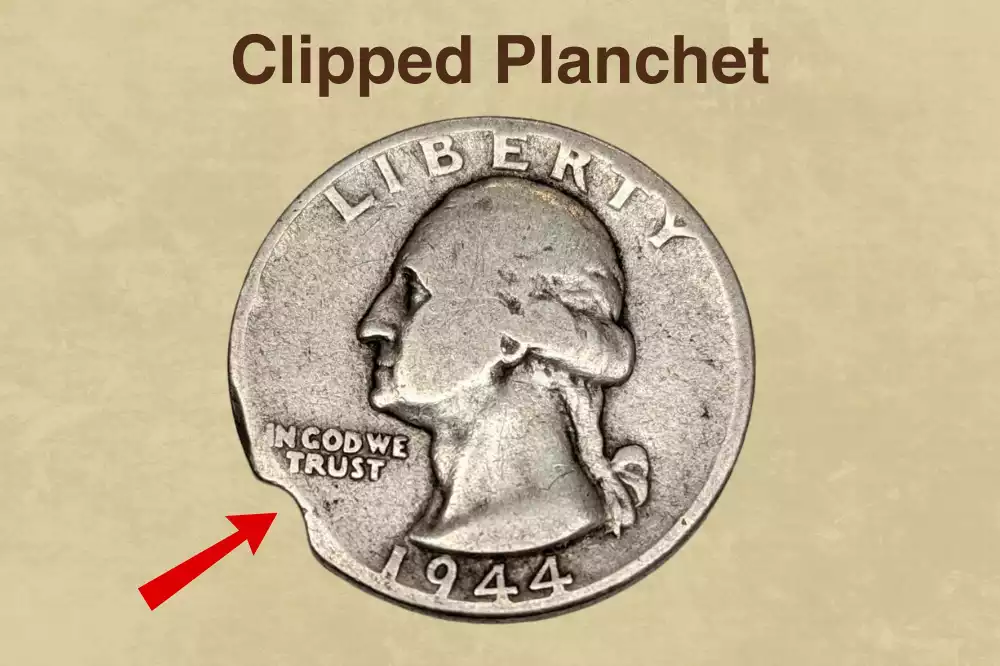
Clipped planchet errors occur when the blanking press fails to punch out complete circular blanks from the metal strip. This happens when the strip is fed improperly into the press or when punches overlap previously punched holes or the edges of the strip. The result is a coin missing a portion of its edge, creating a distinctive appearance.
There are three main types: curved clips (most common, from overlapping punches), straight clips (from striking the strip’s edge), and ragged clips (from defective areas in the strip). Curved clips often show the Blakesley Effect—a distinctive distortion on the rim opposite the clip.
Value depends primarily on the clip’s size and the coin’s grade. A 75% clipped Washington quarter can be worth around $200, while a 5% clip might only bring $5. Lustrous, mint state examples command higher premiums than circulated pieces.
Specific examples include:
- 1965 Washington Quarter clipped planchet (listed at $19.95)
- 1957 Washington Quarter curved clip: $14.95 (Yesterday’s Change)
Clipped planchets remain one of the most popular and accessible error types for collectors, found on Washington quarters from all eras of production.
Known Clipped Planchet Error Years for Washington Quarters (1932-1998):
Washington Quarter Die Errors
13. Die Break Errors

A die break occurs when a portion of the die chips away during the minting process. The broken area fills with metal during striking, creating raised, irregular formations on the coin’s surface. These breaks develop from metal fatigue after striking thousands of coins, causing the die steel to fracture and fall away.
Die breaks are categorized by their location and severity. Interior die breaks create small raised bumps or irregular shapes within the design, while the most dramatic type—called a “cud”—occurs when the break extends to the die’s edge, producing a large, blob-like raised area along the coin’s rim. Some collectors even nickname distinctive breaks, such as “Booger Washington” for breaks beneath Washington’s nose.
Value is determined by three factors: size, location, and visual impact. Minor die breaks on Washington quarters typically bring modest premiums of $15-$25, while retained cuds in high grades (MS65-67) can reach $60. The most valuable examples are complete rim cuds that eliminate key features like the date, which can exceed $100 even in lower grades.
While die breaks are among the more common mint errors on Washington quarters, dramatic examples with prominent visual appeal remain consistently popular with collectors seeking distinctive pieces for their error collections.
14. Die Crack Errors

Die cracks are thin, raised lines that appear on coins when the die develops a crack after being subjected to immense pressure during the minting process. These cracks form through the aging process of a die and may appear anywhere on any coin. Unlike die breaks, cracks create linear raised marks rather than irregular blobs.
During subsequent strikes, metal from the planchet fills in the crack, resulting in a raised line on the finished coin. Early Washington quarters commonly show cracks near the top of Washington’s head, suggesting this area experiences particular stress during striking. Die cracks often progress from small hairlines to more prominent features as the die continues to deteriorate.
Die cracks typically add modest premiums, but exceptional examples achieve significant prices: A 1965 Washington quarter with a long die crack from 12 o’clock through the eagle’s wing, graded NGC MS68, sold for $1,920 at Heritage Auctions in October 2019.
While common die cracks add minimal value, dramatic examples crossing major design elements or creating distinctive patterns appeal strongly to error collectors, especially in high grades.
Known Die Crack Error Years for Washington Quarters (1932-1998):
15. Die Gouge Errors

Die gouges occur when a foreign object is dragged across and digs into the die face. Such gouges will appear as raised areas on the coin’s surface. Unlike die cracks that form from metal fatigue, gouges result from physical damage caused by external objects scraping the die.
Die gouges are most easily diagnosed when there are clear longitudinal striations within the body of the die gouge. These raised lines on the coin can vary from subtle marks to dramatic features. Some gouges create interesting visual effects, making them more desirable to collectors.
The 1956 Washington quarter reverse die gouge (FS-701) is the most famous catalogued die gouge variety. A PR69 example sold for $1,196 on eBay in September 2015, while a PR68 Cameo sold for $408 at Heritage Auctions in February 2018. This variety demonstrates that significant gouges can become recognized varieties commanding substantial premiums.
While basic die gouges on common dates add modest value, dramatic examples or those creating interesting patterns appeal strongly to variety collectors. The value depends primarily on the gouge’s size, location, and visual impact.
Known Die Gouge Error Years for Washington Quarters (1932-1998):
16. Re-engraved Die Errors
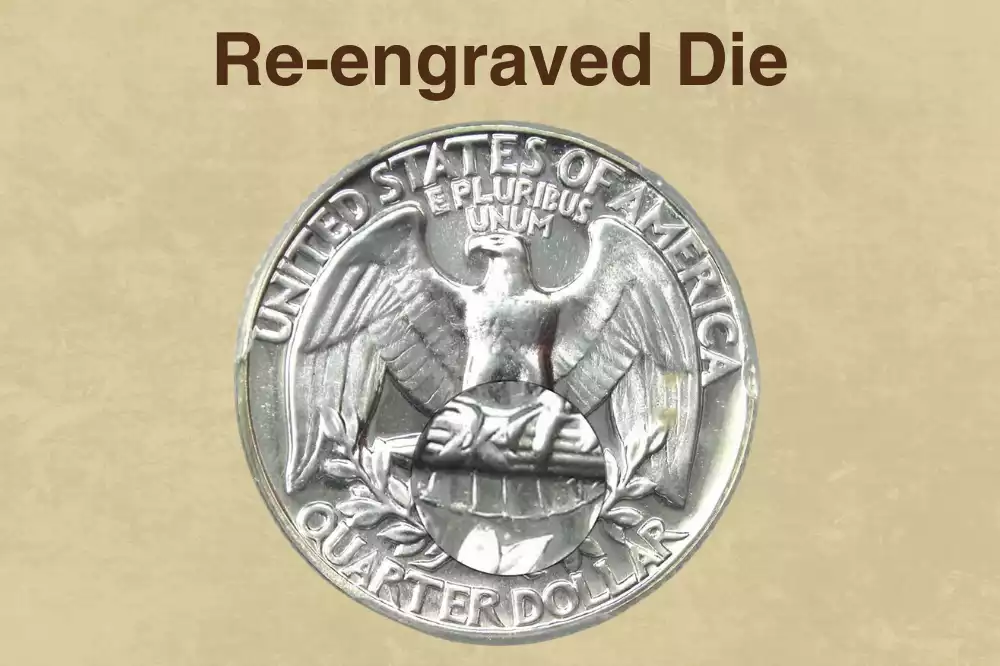
A re-engraved die is one that has been modified after hubbing or installation. Repair jobs were usually undertaken to restore lost details and enhance faint details. These modifications typically resulted from overpolishing, die abrasion, or die wear that left design elements mushy or indistinct.
The most famous re-engraved Washington quarters are the 1952 “Superbird” (FS-902), 1953 (FS-901), and 1957-D (FS-901) varieties, all featuring enhanced tail feathers. The mushy tail feathers on these heavily-worn dies were enhanced by dragging an engraving tool across the die face. Mysteriously, the efforts are invariably crude—the incised lines not only don’t follow the original feather outlines, but they extend well into the arrow bundle.
Re-engraved varieties command significant premiums:
- 1953 proof FS-901: $3,549 (PR66, eBay 2013)
- 1957-D FS-901: $386 to $2,306 in grades 55 to 64
- 1952 “Superbird” FS-902: $1,821 (PR69, Heritage 2017)
These re-engravings remain puzzling—repair efforts were sporadic, seemingly arbitrary, and inexplicably clustered in the 1950s, making them intriguing collectibles for variety specialists.
Known Re-Engraved Error Years for Washington Quarters (1932-1998):
17. Clashed Die Errors

A clashed die occurs when the planchet delivery system fails to deposit a planchet between the dies and the press cycles, causing the dies to smash directly into each other. This tremendous pressure transfers design elements from one die onto the other, creating ghost-like impressions on all subsequently struck coins.
The transferred design appears as a mirrored, incuse (sunken) image on the opposite side of the coin. These ghost-like impressions are typically softer and less defined than the intended design, making them appear as faint shadows beneath the normal striking.
While clashed dies are perhaps most famous on other denominations (such as the 1955 “Bugs Bunny” Franklin half dollar where the eagle’s wing creates the appearance of teeth), Washington quarters also exhibit this error. A notable example is the 1976-S Proof Bicentennial quarter that combined both clashed dies and a 45% off-center strike, which reached a bid of $835 at auction.
For Washington quarters, clashed dies from the silver era (1932-1964) typically command modest premiums unless the clash is particularly dramatic. The value primarily depends on the strength and clarity of the transferred design elements—the more visible and distinct the ghost image, the more desirable the coin becomes to error collectors.
Known Clashed Dies Error Years for Washington Quarters (1932-1998):
Washington Quarter Clad Errors
18. Missing Clad Layer Errors
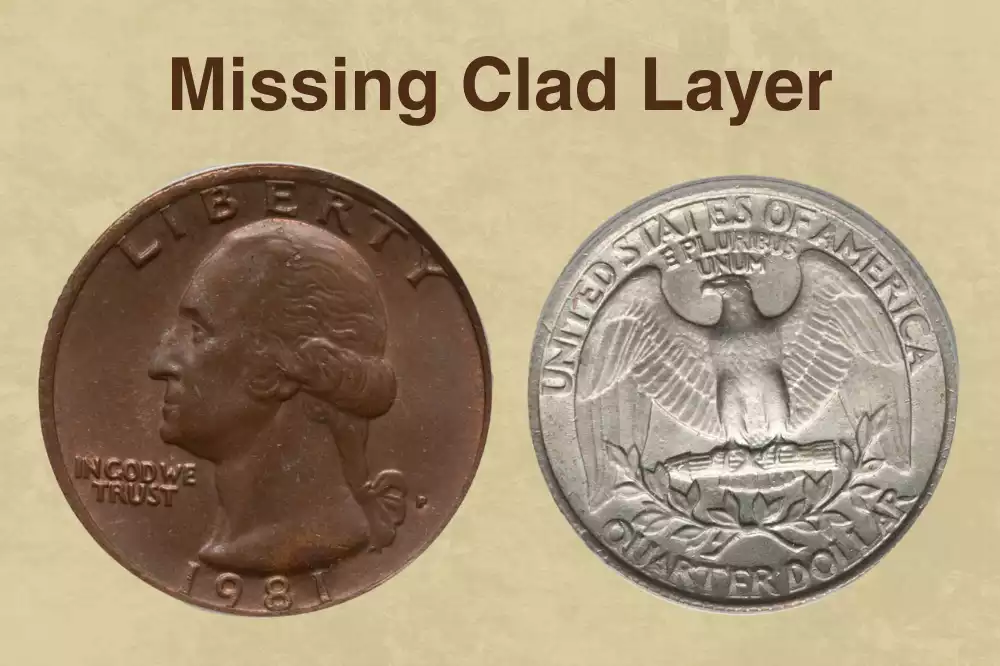
A missing clad layer is a coin that has one of its outer nickel layers missing from the copper core, resulting in a coin that’s copper on one side and nickel on the other. This error type began in 1965 when the U.S. Mint switched from silver to clad coinage.
The error can occur on either the obverse or reverse, determined randomly by how the defective planchet enters the striking chamber. Normal quarters weigh 5.67 grams, while missing clad layer examples typically weigh 4.6-4.7 grams.
For traditional Washington quarters, obverse missing clad layers typically command about twice the value of reverse examples. In uncirculated condition with full eye appeal, single-side missing clad layer quarters from this era typically sell for $300-$500, while circulated examples bring $30-$50.
Dual missing clad layer errors (both sides missing) are incredibly rare, with only 5-10 known for Washington quarters, typically selling for $1,000 to $5,000. These early clad errors from 1965-1998 represent the beginning of a new error type in American coinage history.
Known Missing Clad Layer Error Years for Washington Quarters (1932-1998):
Washington Quarter Special Errors
19. Brockage Errors
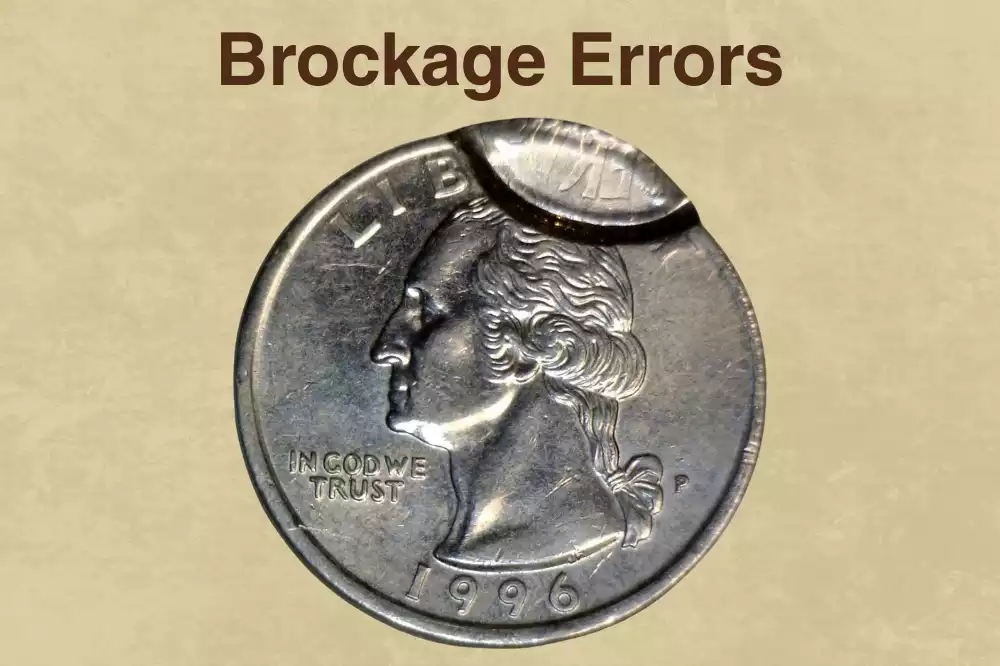
A brockage occurs when an already struck coin fails to eject and gets stuck to the die. When this wayward coin comes between the die and a subsequent planchet, it transfers an inverse (mirror) version of its design to the new coin. The resulting impression is both mirrored and incuse – design elements that would normally be raised appear sunken into the surface.
Brockages can occur as obverse brockages (when the coin sticks to the lower die) or reverse brockages (when it sticks to the upper die). The completeness of the brockage significantly affects its value, with full brockages commanding substantially higher prices than partial ones. Additionally, the era of production plays a crucial role in determining rarity and value – silver-era brockages from 1932-1964 are considerably rarer and more valuable than their modern clad counterparts.
Recent auction records illustrate the value range for Washington quarter brockages.
- 1998-D Washington Quarter Partial Collar/Obverse Brockage: Sold for $99
- 1998 Washington Quarter 50% Brockage MS64: Sold for $379.97 on eBay
The visual drama of these errors, combined with their relative scarcity, makes brockages consistently popular among error collectors. Partial brockages sell for less than full brockages, and the rarity varies considerably by time period, condition, and denomination, with each factor playing a role in determining the final market value.
Known Brockage Error Years for Washington Quarters (1932-1998): 1998 Quarter
20. Overstruck Coin Errors

Overstruck errors occur when a coin is struck on top of another coin rather than on a blank planchet. These errors are extremely rare because foreign coins or wrong denominations must accidentally enter the minting process and pass through quality control.
The most famous Washington Quarter overstrike is the 1970-S Proof quarter struck over a 1941 Canadian quarter that we mentioned at the beginning. This unique 1970-S Proof Quarter mint error from the United States was overstruck on a Canadian Quarter that circulated during the reign of King George V from 1911-1936. Under magnification, traces of the Canadian coin’s design are visible beneath the U.S. features. Only one authenticated example of the 1970-S Washington quarter overstruck on a 1941 Canadian coin is known to exist.
This coin first sold for $35,000 when discovered by renowned error expert Mike Byers. Since then, due to increasing interest in rare error coins and the coin’s continued media exposure, its estimated value has risen to as much as $250,000.
Another significant overstrike is the 1983-P 25C Washington Quarter — Overstruck on an Amusement Token — MS65 NGC. Ranked #65 in the 100 Greatest U.S. Error Coins (2010). The undertype shows the legend THIS IS / MY / LUCKY / DAY is fully readable and adorned with clovers and peripheral dentils. The amusement token 1983 error coins sold for $15,862.50 in the 2014 auction.
Known Overstruck Coin Error Years for Washington Quarters (1932-1998):
Conclusion
The beauty of error collecting lies in its accessibility. While the 1970-S Canadian overstrike may be unique, new errors emerge every day from U.S. Mint facilities. Armed with knowledge of coin errors, any collector can join the search. Your next handful of quarters might just contain a piece of numismatic history—you simply need to know what to look for.
The post 20 Rare Washington Quarter Errors Worth Money (Full List with Pictures) appeared first on CoinValueChecker.


